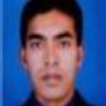International Journal of Wireless and Microwave Technologies (IJWMT)
IJWMT Vol. 15, No. 1, 8 Feb. 2025
Cover page and Table of Contents: PDF (size: 1029KB)
Performance Investigation of Various Estimation Models for Received-Signal Strength and Link-Speed Predictions of the 802.11ac WLANs
PDF (1029KB), PP.18-39
Views: 0 Downloads: 0
Author(s)
Index Terms
IEEE 802.11ac, WLAN, Shadow Fading, Received-Signal-Strength, Link Speed Estimation
Abstract
The 802.11 ac protocol is widely utilized in local-area-networks with wireless access (WLANs) because of its effective 5GHz networking technology. Several path-loss and link-speed (LS) prediction models have previously been employed to aid in the effective design of 802.11 WLAN systems that predict the received-signal-strength (RSS), and LS between the client and the access-point (AP). However, majority of them fail to account for numerous indoor propagation phenomena that affect signal propagation in complex environments. This includes the shadowing that influences RSS, especially in a network system with multiple moving parts and small-scale fading, where signal reflections, obstacles, and dispersion lead to RSS fluctuations. Therefore, taking into account shadow fading influence in the LS estimation model is critical for enhancing estimation accuracy. Previously, we proposed modification of the simple log-distance model by taking shadowing variables into account which dynamically optimize the RSS and LS estimation precision of the previous model. Though our modified model outperforms the prior model, the model’s accuracy has not been evaluated in comparison to a wide range of other mathematical models. In this paper, we present the performance investigation of various estimation models for RSS and LS estimations of 802.11ac WLANs under various scenarios and analysis their performance accuracy by considering several statistical error models. To test its relative effectiveness the proposed modified model's performance is also compared against two existing machine learning (ML) approaches. To calculate the models parameters including shadowing factor, we first show the experimental results of RSS and LS of the 802.11ac MU-MIMO link. Then, we tune the path-loss exponent, shadowing factors, and other parameters of models by taking into account experimental data. Our estimation results indicate that our modified model is more precise than the other mathematical estimation models and its accuracy is very similar to the random forest (RF) ML model, in an extensive variety of consequences with less error.
Cite This Paper
Sumon Kumar Debnath, Mutia Afroze Alin, Iffat Ara Badhan, Md. Ahsan Habib, "Performance Investigation of Various Estimation Models for Received-Signal Strength and Link-Speed Predictions of the 802.11ac WLANs", International Journal of Wireless and Microwave Technologies(IJWMT), Vol.15, No.1, pp. 18-39, 2025. DOI:10.5815/ijwmt.2025.01.02
Reference
[1]M. S. Gast, 802.11ac: A Survival Guide: Wifi at gigabit and beyond, 1st ed., . 1st ed., USA: O’Reilly Media, 2013.
[2]R. S. C. Sourangsu Banerji, “IEEE 802.11: wireless LAN technology,” Int. J. Mob. Netw. Commun. Telemat., 2013.
[3]Debnath, S.K., Saha, M., Funabiki, N., Kao W. C., “Throughput Estimation Model for IEEE 802.11n MIMO Link in Wireless Local-Area Networks,” in International Conference on Computer and Communication Systems 3, 2018, pp. 327–331. doi: https://doi.org/10.1109/CCOMS.2018.8463225.
[4]E. A. Ubom, A. C. Akpanobong, and I. I. Abraham, “Characterization of Indoor Propagation Properties and Performance Evaluation for 2.4Ghz Band Wi-Fi,” SSRN Electron. J., no. April, 2019, doi: 10.2139/ssrn.3391700.
[5]S. K. Aman, M. A. U., and Debnath, “Modification of Link Speed Estimation Model for IEEE 802.11ac WLANs by Considering Shadowing Effect,” in In International Conference on Machine Intelligence and Emerging Technologies, Cham: Springer Nature Switzerland, pp, 2022, pp. 303–316.
[6]T. S. Rappaport, Wireless Communications Principles and Practice. Prentice Hall, 1996.
[7]N. Ali and H. A. H. . Al-Behadili, “A Comprehensive Review of Radio Signal Propagation Prediction for Terrestrial Wireless Communication Systems”, MJES, vol. 3, no. 1, pp. 100–120, Jul. 2024.
[8]Z. Li, “Performance Analysis of IEEE 802 . 11 DCF : Throughput , Delay , and Fairness,” Comput. Eng., no. 1.
[9]H. Sawada et al., “Path loss and throughput estimation models for an IEEE 802.11af prototype,” IEEE Veh. Technol. Conf., vol. 2015, pp. 0–4, 2015, doi: 10.1109/VTCSpring.2015.7145995.
[10]A. Eyadeh, A., Jarrah, M., Aljumaili, “Modeling and Simulation of Performance limits in IEEE 802.11 Point Coordination Function,” Int. J. Recent Technol. Eng., vol. 8, no. 4, pp. 5575–5580, 2019, doi: 10.35940/ijrte.b2313.118419.
[11]T. Tajima, S., Funabiki, N., Higashino, “Application of IEEE802.11ac/n Link Throughput Estimation Model in Holding Access-Point Assignment Algorithm for Wireless Local-Area Network,” J. Commun. 15(1), pp. 81–87, 2020.
[12]S. Chaudhari, J. Hu, B. Daneshrad, and J. Chen, “Performance Comparison Between MIMO and SISO based on Indoor Field Measurements,” no. September, pp. 3–7, 2015.
[13]O. G. N. Oguejiofor O. S, Aniedu A. N, Ejiofor H. C, “Indoor Measurement And Propagation Prediction Of WLAN At 2.4GHz,” Int. J. Eng. Res. Technol., vol. 2, no. 7, pp. 798–802, 2013.
[14]D. Dobkin, “Indoor propagation issues for wireless LANs.,” RF Des. Mag., vol. 1, no. September, pp. 40–46, 2002.
[15]B. M. A. and S. K. Bahrin Sujak , Deepak Kumar Ghodgaonkar, “Indoor Propagation Channel Models for WLAN 802.1lb at 2.4GHz ISM Band,” in https://ieeexplore.ieee.org/xpl/conhome/10698/proceeding, Johor, Malaysia: IEEE, 2005.
[16]C. B. Andrade and R. P. F. Hoefel, “IEEE 802.11 WLANS: A comparison on indoor coverage models,” Can. Conf. Electr. Comput. Eng., no. 5, 2010, doi: 10.1109/CCECE.2010.5575205.
[17]M. Rawaa Akram, A. H. Al-Nakkash, and O. N. M. Salim, “A comparative study of indoor propagation models for IEEE 802.11n network,” ACM Int. Conf. Proceeding Ser., no. April, pp. 69–73, 2019, doi: 10.1145/3321289.3321296.
[18]A. M. Al-Samman, T. A. Rahman, M. H. Azmi, A. Sharaf, Y. Yamada, and A. Alhammadi, “Path loss model in indoor environment at 40 GHz for 5G wireless network,” Proc. - 2018 IEEE 14th Int. Colloq. Signal Process. its Appl. CSPA 2018, no. March, pp. 7–12, 2018, doi: 10.1109/CSPA.2018.8368676.
[19]H. A. Hashim, S. L. Mohammed, and S. K. Gharghan, “Path loss model-based PSO for accurate distance estimation in indoor environments,” J. Commun., vol. 13, no. 12, pp. 712–722, 2018, doi: 10.12720/jcm.13.12.712-722.
[20]V. O. Ayidu, Nneka Joy and Elaigwu, “PATHLOSS PREDICTION MODEL IN WLAN PROPAGATION”.
[21]M. Vasudevan and M. Yuksel, "Machine Learning for Radio Propagation Modeling: A Comprehensive Survey," in IEEE Open Journal of the Communications Society, vol. 5, pp. 5123-5153, 2024, doi: 10.1109/OJCOMS.2024.3446457.
[22]R. Azoulay, E. Edery, Y. Haddad, and O. Rozenblit, “Machine learning techniques for received signal strength indicator prediction,” Intell. Data Anal., vol. 27, no. 4, pp. 1167–1184, 2023, doi:10.3233/IDA-226750.
[23]M. Benisha and V. T. Bai, “A multiple linear regression-based machine learning model for received signal strength prediction of multiband applications,” Int. J. Mob. Commun., vol. 23, no. 2, pp. 127–147, 2024, doi:10.1504/IJMC.2024.136626.
[24]L. Rana and J. G. Park, "An Enhanced Indoor Positioning Method based on RTT and RSS Measurements under LOS/NLOS Environment," in IEEE Sensors Journal, doi: 10.1109/JSEN.2024.3441247.
[25]F. Rezaie et al., “Spatial modeling of geogenic indoor radon distribution in Chungcheongnam-do, South Korea using enhanced machine learning algorithms,” Environ. Int., vol. 171, no. November 2022, p. 107724, 2023, doi: 10.1016/j.envint.2022.107724.
[26]S. Alexander and G. Pugliese, “Cordless communication within buildings: Results of measurements at 900 MHz and 60 GHz,” British Telecom Technology Journal, 1(1), 99–105, 1983.
[27]R. Davies, A. Simpson and J. Mcgreehan, “Propagation measurements at 1.7 GHz for microcellular urban communications,” Electronics Letters, 26(14), 1053–1055, 1990, doi: 10.1049/el:19900682.
[28]D. Devasirvathan, “Multi-frequency propagation measurements and models in a large metropolitan commercial building for personal communications,” IEEE International Symposium on Personal, Indoor and Mobile Radio Communications, UK: IEEE, 1991. doi: https://doi.org/10.1109/PIMRC.1991.571472.
[29]G. F. Pedersen, “COST 231-Digital mobile radio towards future generation systems,” European Commission, 1999.
[30]H. Hashemi, “The indoor radio propagation channel,” Proceedings of the IEEE, 1993, 81(7), 943–968.
[31]R. A. Valenzuela, O. Landron and D. L. Jacobs, "Estimating local mean signal strength of indoor multipath propagation," IEEE Transactions on Vehicular Technology, vol. 46, no. 1, pp. 203-212, Feb. 1997, doi: 10.1109/25.554753.
[32]D. Munoz, F. Bouchereau, C. Vargas and R. Enriquez, “CHAPTER 2—Signal parameter estimation for the localization problem,” D. Munoz F. Bouchereau C. Vargas, & R. Enriquez (Eds.), Position location techniques and applications (pp. 23–65). Academic Press, 2009.
[33]Y. Alvarez, M. de Cos, J. Lorenzo and F. Las-Heras, “Novel received signal strength-based indoor location system: Development and testing,” EURASIP Journal on Wireless Communications and Networking, 2010, https://doi.org/10.1155/2010/254345.
[34]S. Farahsari, A. Farahzadi, J. Rezazadeh, A. Bagheri, “A survey on indoor positioning systems for iot-based applications,” IEEE Internet Things J. , 9, 7680–7699, 2022.
[35]A. Florio, G. Avitabile, G. Coviello, “A Linear Technique for Artifacts Correction and Compensation in Phase Interferometric Angle of Arrival Estimation” Sensors 2022, 22, 1427.
[36]P. Pascacio, S. Casteleyn, J. Torres-Sospedra, E.S. Lohan, J. Nurmi, “Collaborative Indoor Positioning Systems: A Systematic Review,” Sensors 2021, 21, 1002.
[37]S. Diagne, T. Val, A.K. Farota, B. Diop, “Assogba O. Performances Analysis of a System of Localization by Angle of Arrival UWB Radio,” Int. J. Communication Network Systems Science, 13, 15–27, 2020.
[38]A. Sonny, A. Kumar, and L. R. Cenkeramaddi, “A survey of application of machine learning in wireless indoor positioning systems,” arXiv [eess.SP], 2024, https://doi.org/10.48550/arXiv.2403.04333.
[39]T. Margiani, S. Cortesi, M. Keller, C. Vogt, T. Polonelli and M. Magno, "Angle of Arrival and Centimeter Distance Estimation on a Smart UWB Sensor Node," in IEEE Transactions on Instrumentation and Measurement, vol. 72, pp. 1-10, 2023, Art no. 9508110, doi: 10.1109/TIM.2023.3282289.
[40]Y. Ma, B. Wang, S. Pei, Y. Zhang, S. Zhang, J. Yu, “An Indoor Localization Method Based on AOA and PDOA Using Virtual Stations in Multipath and NLOS Environments for Passive UHF RFID.”
[41]S. Ravindra, S.N. Jagadeesha, “Time of Arrival Based Localization in Wireless Sensor Networks: A Linear Approach”, 2013.
[42]A. Mohamed, M. Tharwat, M. Magdy, T. Abubakr, O. Nasr, M. Youssef, “DeepFeat: Robust Large-Scale Multi-Features Outdoor Localization in LTE Networks Using Deep Learning,” IEEE Access 2022, 10, 3400–3414.
[43]“RSRP and RSRQ,” RSRP and RSRQ—Teltonika Networks Wiki.
[44]A. Bannour, A. Harbaoui, F. Alsolami, “Connected Objects Geo-Localization Based on SS-RSRP of 5G Networks,” Electronics 2021, 10, 2750.
[45]R. Kawecki, S. Hausman, P. Korbel, “Performance of Fingerprinting-Based Indoor Positioning with Measured and Simulated RSSI Reference Maps,” Remote Sens. 2022, 14, 1992.
[46]LTE RSSI, RSRP and RSRQ Measurement, CableFree. 2018.
[47]M. Behjati., M.A. Zulkifley, H.A.H. Alobaidy, R. Nordin, N.F. Abdullah, “Reliable aerial mobile communications with RSRP & RSRQ prediction models for the Internet of Drones: A machine learning approach,” Sensors 2022, 22, 5522. Channel State Information. DBpedia.
[48]M. Sharma, “Effective Channel State Information (CSI) Feedback for MIMO Systems in Wireless Broadband Communications,” Ph.D. Thesis, Queensland University of Technology, Brisbane, Australia, 2014.
[49]T. Sanam, “A Channel State Information Based Device Free Indoor Localization for Context Aware Computing: A Machine Learning Approach”.
[50]Understanding RSSI, MetaGeek.
[51]K. Shin, R. McConville, O. Metatla, M. Chang, C. Han, J. Lee, A. Roudaut, “Outdoor Localization using BLE RSSI and Accessible Pedestrian Signals for the Visually Impaired at Intersections,” Sensors 2022, 22, 371.
[52]L. Polak, S. Rozum, M. Slanina, T. Bravenec, T. Fryza, A. Pikrakis, “Received signal strength fingerprinting-based indoor location estimation employing machine learning,” Sensors 2021, 21, 4605.
[53]S. Subedi, J.-Y. Pyun, “A Survey of Smartphone-Based Indoor Positioning System Using RF-Based Wireless Technologies,” Sensors 2020, 20, 7230.
[54]A. Sesyuk., S. Ioannou, M. Raspopoulos, “A survey of 3D indoor localization systems and technologies,” Sensors 2022, 22, 9380.
[55]H. Du, C. Zhang, Q. Ye, W. Xu, P.L. Kibenge, K. Yao, “A Hybrid Outdoor Localization Scheme with High-Position Accuracy and Low-Power Consumption,” EURASIP J. Wirel. Commun. Netw., 2018.
[56]What is RTT (Round-Trip Time) and How to Reduce It? StormIT, https://www.stormit.cloud/blog/what-is-round-trip-time-rtt-meaning-calculation.
[57]B.K.P. Horn, “ Indoor Localization Using Uncooperative Wi-Fi Access Points,” Sensors 2022, 22, 3091.
[58]M.H. Bergen, F.S. Schaal, R. Klukas, J. Cheng, J. F. Holzman, “Toward the implementation of a universal angle-based optical indoor positioning system,” Front. Optoelectron, 2018, 11, 116–127.
[59]M. Heydariaan, H. Dabirian, O. Gnawali, “AnguLoc: Concurrent Angle of Arrival Estimation for Indoor Localization with UWB Radios”.
[60]P.K. Eranti, B.D. Barkana, “An Overview of Direction-of-Arrival Estimation Methods Using Adaptive Directional Time-Frequency Distributions,” Electronics 2022, 11, 1321.
[61]A. Cidronali, E. Ciervo, G. Collodi, S. Maddio, M. Passafiume, G. Pelosi, “Analysis of Dual-Band Direction of Arrival Estimation in Multipath Scenarios,” Electronics 2021, 10, 1236.
[62]J. Isaacs, K. Ezal, J. Hespanha, “Local Carrier-Based Precision Approach and Landing System”.
[63]D. Arbula, S. Ljubic, “Indoor Localization Based on Infrared Angle of Arrival Sensor Network,” Sensors 2020, 20, 6278.
[64]M.W.P. Maduraga, R. Abeysekara, “Comparison of supervised learning-based indoor localization techniques for smart building applications,” International Research Conference on Smart Computing and Systems Engineering (SCSE), Colombo, Sri Lanka, pp. 145–148, 1 September 2021.
[65]F. Liu, J. Liu, Y. Yin, W. Wang, D. Hu, P. Chen, Q. Niu, Institution of Engineering and Technology, Wiley Online Library.
[66]G. James, D. Witten, T. Hastie, and R. Tibshirani, An Introduction to Statistical Learning, Springer, 2013.
[67]A. A. Enughwure, Signal Propagation Loss Prediction Model for 3.5 GHz 5G Network using Gradient Boosted Linear Regression.
[68]A. Cohen and Y. A. Alqudah, “On the application of generalized linear mixed models for predicting path loss in LTE networks,” EURASIP J. Adv. Signal Process., vol. 2023, no. 1, 2023.
[69]Q. T. Nguyen, T. P. Nguyen, N. S. Duong, and T. M. Dinh Thi, “Improving indoor positioning system using weighted linear least square and neural network,” Int. J. Sens. Netw., vol. 1, no. 1, p. 1, 2022.
[70]T. Hastie, R. Tibshirani, and J. H. Friedman, The elements of statistical learning: Data mining, inference, and prediction, 2nd ed. New York, NY: Springer, 2009.
[71]A. Liaw and M. Wiener, “Classification and Regression by randomForest,” R News, vol. 2, no. 3, pp. 18–22, 2002.
[72]L. Breiman, Mach. Learn., vol. 45, no. 1, pp. 5–32, 2001.
[73]Y. Nuñez, L. Lovisolo, L. da Silva Mello, and C. Orihuela, “On the interpretability of machine learning regression for path-loss prediction of millimeter-wave links,” Expert Syst. Appl., vol. 215, no. 119324, p. 119324, 2023. https://doi.org/10.1016/j.eswa.2022.119324.
[74]S. A. Aldossari, “Predicting path loss of an indoor environment using artificial intelligence in the 28-GHz band,” Electronics (Basel), vol. 12, no. 3, p. 497, 2023. https://doi.org/10.3390/electronics12030497.
[75]Q. Niu, W. Shi, Y. Xu and W. Wen, "High-accuracy NLOS identification based on random forest and high-precision positioning on 60 GHz millimeter wave," in China Communications, vol. 20, no. 12, pp. 96-110, Dec. 2023, doi: 10.23919/JCC.fa.2021-0742.202312.
[76]I. T. U. ITU, Propagation data and prediction methods for the planning of indoor radiocommunication systems and radio local area networks in the frequency range 900 MHz to 100 GHz Recommendation ITU-R P.1238-7. Geneva: ITU, 2012.
[77]A. H. Pahlavan, K. Levesque, Wireless information networks (Vol. 93): John Wiley & Sons, 2nd ed., 2005.
[78]“Jperf, https://jperf.soft112.com/, last accessed 2022/07/28.”
[79]“Homedale Wifi/WLAN monitor, https://the-sz.com/products/homedale/index.php, last accessed 2022/07/28.”
[80]Y. A. Zakaria, E. K. I. Hamad, A. S. Abd Elhamid, and K. M. El-Khatib, “Propagation Measurements and Calculation of Path Loss Exponent for Outdoor Cellular Communication Systems at 3.5 GHz,” Radioelectron. Commun. Syst., vol. 64, no. 5, pp. 247–254, 2021, doi: 10.3103/S0735272721050034.
[81]R. Abedi, R. Costache, H. Shafizadeh-Moghadam, and Q. B. Pham, “Flash-flood susceptibility mapping based on XGBoost, random forest and boosted regression trees,” Geocarto Int., vol. 37, no. 19, pp. 5479–5496, 2022, doi: 10.1080/10106049.2021.1920636.


